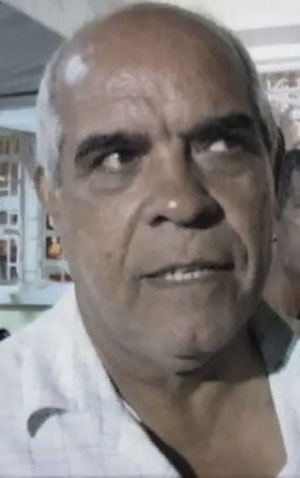In a marathon hearing lasting just under five hours, the Caribbean Court of Justice yesterday heard arguments in the appeal filed by political commentator Ramon Gaskin, who has over the years strongly argued that separate environmental permits were not granted to Hess Guyana Exploration Ltd (Hess) and China National Offshore Oil Cooperation Guyana (CNOOC) for what he says is their involvement in oil production here.
The battery of attorneys representing the two companies, however, equally, strongly refute the position advanced by Gaskin (the Appellant), that being a joint venture by Hess and CNOOC, those companies would be covered by virtue of their operation under Esso (an ExxonMobil subsidiary) which is the developer.
Before the five-member panel of judges at the in-person hearing, the issue which consumed the attention of the apex court was the contention held by Gaskin, presented by his lawyers that the single environmental permit granted to Exxon-Mobil’s local subsidiary Esso Exploration and Production Guyana Limited (Esso), could not cover Hess and CNOOC.

The Court is now set to rule at a date to be announced.
Gaskin had challenged the Petroleum Production Licence (PPL) issued to Hess and CNOOC by former Minister of Natural Resources Raphael Trotman, whom he said ought not to have made the grant, since they did not have separate environmental permits.
Back in February of 2020, acting Chief Justice Roxane George SC threw out the case, ruling that Hess and CNOOC did not need separate environmental permits from co-venturer ExxonMobil/Esso who was the developer, to conduct oil production here.
She declared the PPL to have been properly issued, while noting that since they operate under Esso; Hess and CNOOC were covered by the environmental permit issued to that company; explaining further that there being a joint venture by Hess and CNOOC, these companies would be covered by virtue of their operation under Esso, which is the developer.
Dissatisfied with the Chief Justice’s ruling in which he said a number of legal errors were made, Gaskin appealed to the Guyana Court of Appeal, but was also unsuccessful in persuading that court as well, that Hess and CNOOC needed separate permits.
The Court of Appeal affirmed the Chief Justice’s decision that the companies did not need separate permits to engage in oil development and production given the licence obtained by their partner, Esso.
It was this ruling that then precipitated his challenge to the CCJ.
Senior Counsel Seenath Jairam who represents Gaskin, told the Trinidad-based court of last resort yesterday that since it was Esso which had been granted an environmental permit, the Minister, in accordance with Section 14 of the Environmen-tal Protection Act, was proper in granting a petroleum production licence to Esso alone.
Peculiar circumstances
In the summary of his presentation, he advanced that given the peculiar circumstances, Esso would have authorisation to continue with its petroleum operations, subject to the law, pending environmental permits also being lawfully granted to Hess and CNOOC.
Against this background he referenced Section 15 of the Act, which states, “Every person who fails to carry out an environmental impact assessment or who commences a project without obtaining an environmental permit as required under this Act or the regulations under it shall be guilty of an offence and shall be liable to the penalties prescribed under paragraph (d) of the Fifth Schedule.”
In his impassioned address, Jairam underscored that the offence under Section 15 has been treated by the Legislature as a strict liability offence, deserving imprisonment in addition to a fine and he added that by failing to obtain an environmental permit, Hess and CNOOC are both in violation of Section 15(1) of the Act and are therefore committing a criminal offence daily.
He then went on to reference Section 13 of the Act, which states, “The [Environmental Protection] Agency (EPA) shall not issue an environmental permit unless the Agency is satisfied that the developer can comply with the terms and conditions of the environmental permit; and the developer can pay compensation for any loss or damage which may arise from the project or breach of any term or conditions or the environmental permit.”
Having regard to this, counsel submitted that Hess and CNOOC are not eligible for an environmental permit or permits unless they carry out an environmental impact assessment and unless the EPA is satisfied that Hess and CNOOC meet the requirements of Section 13 of the Act.
He then reiterated his argument that the benefit of the environmental permit issued to Esso could not be extended to Hess and CNOOC, since they have not been approved by the EPA under Section 13 of the Act while adding that Esso does not have the power to share the benefit of the environmental permit with them.
Gaskin is of the view that not only do the two companies not have environmental permits to facilitate their exploration of oil here, but they have also not carried out any environmental impact assessments.
In their submissions to the Court, the battery of attorneys for the Minister, led by Senior Counsel Edward Luckhoo, advanced that the environmental permit was issued in relation to a project and that it was not necessary for it to be issued to each company which is a party to the petroleum agreement for the execution of the project.
On this point he reasoned that nowhere can it be legally substantiated that a PPL is to be granted to each of the three companies; even as he made the point that the licensed when issued was for the consortium—the project—and not every company involved.
Attorney Sanjeev Datadin for the EPA, which appeared amicus in the proceedings, expressed the same sentiments.
Developer
Luckhoo said that when one examines Section 11 of the Environmental Protection Act, as the Chief Justice had rightly found, it is the developer who is required to apply to the Environmental Protection Agency (EPA) for an environmental permit.
Referencing the rulings of both the High Court and the Court of Appeal, Luckhoo, as did Senior Counsel Andrew Pollard for Esso, CNOOC and Hess; said that Section 10 of the Act, defines developer to mean, “the applicant for environmental authorization for a project or the State initiating a project.”
Pollard had advanced that it was Esso which was the developer and that Hess and CNOOC were mere financiers of the project and not involved of the actual exploration operation.
Luckhoo went on to further point out on behalf of his client and which was sanctioned by both lower courts that the Environmental Protection (Authorisation) Regulations also support submissions made on behalf of the minister that the authorization is granted in respect of a project.
Regulation 17(2) (b) states, “an application for an environmental authorization – shall be in respect of one project or facility.”
Against this background Chief Justice George had said that it was clear that the environmental authorization as evidenced in the environmental permit relates to the project.
Luckhoo and Datadin had argued that the Appellant’s reliance on Section 14 (1) of the Environmental Protection Act was misplaced and did not apply in the case, since Esso could be classified as the developer.
On this point, the Chief Justice had specifically said that it was this company that had applied for, and obtained the environmental permit, and thus, there was such a permit in existence when the PPL was issued.
The environmental permit, she had gone on to say, was in relation to a project involving the extraction of petroleum.
Section 14 (1) of the Act on which Gaskin relies states, “a public authority shall not give development consent in any matter where an environmental authorization is required unless such authorization has been issued and any development consent given by any public authority shall be subject to the terms of the environmental authorization issued by the agency.”
Luckhoo referenced Section 8 of the Petroleum Act, which provides for the issuance of the petroleum production licence. The provision states, “no person shall search for, or get from, any land in Guyana petroleum except—(a) under and in accordance with a licence granted by the minister under this Act….”
The lower courts had ruled that in accordance with Section 9 (2) in Part IV of the Petroleum Act, Hess and CNOOC, as companies, would satisfy requirements to be granted petroleum production licence.
That section states, ‘a licence may be granted to two or more persons associated together in any form of joint arrangement.’
The courts below had said that the PPL was granted to Esso, Hess and CNOOC as joint venture licensees, but that they are referred to as the licensee, based on Esso’s application representing all three companies.
Luckhoo had submitted that where liability is joint and several, the parties have jointly and individually promised to carry out the same promise or obligation; and that there is only one obligation by which they are all bound.
On the issue of joint and several obligations, Chief Justice George had said that “I therefore do not agree that the effect of the joint and several obligations on Esso, Hess and CNOOC means that each has a separate obligation to comply with the Environmental Protection Act by each obtaining an environmental permit.”
She, as did the Court of Appeal, had emphasized that they are bound to comply with the environmental permit issued to Esso by virtue of the petroleum production licence and the petroleum agreement.
Following the hearing of the case, CCJ President, Justice Adrian Saunders, informed that the Court would now be set to rule on a date to be announced after it would have considered the arguments.
The appeal was heard by Justice Saunders, together with Justices Winston Anderson, Andrew Burgess, Denys Barrow and Maureen Rajnauth-Lee.






